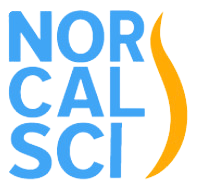Dec. 10 Pilates class explores "Intermediate floor-based movement for SCI"
Working and moving on the floor is an important component of exercise and recovery programs after SCI because it offers a unique opportunity to explore your true abilities. There is no equipment holding you back, or any helper giving you a false sense of function. In this Thurs., Dec. 10th at 5:30 p.m. PST class, Pilates teacher Stephanie Comella, will guide you through a floor- (or bed-) based Pilates and movement sequence specific for SCI athletes who are looking for the next level of challenges. You can register for this free virtual class HERE.
The floor is one of the most available places to work - it’s safe, free, and everyone has one. Yes, there is the barrier of getting on and off the floor, but with a little help or practice getting down there, a whole new world becomes available to you. This class is great for you if you are able to (or almost able to) sit up independently from a laying down position. Stephanie will guide you through exercises lying on your back, side, stomach, seated and hands-and-knees position. If getting into these positions is challenging for you, you may want to have a helper nearby to assist.
NOTE: Stephanie highly recommends working on the floor due to how the firm floor facilitates better movement. However, participating on your bed is acceptable if this is your only option. She recommends that you set yourself up prior to the class, especially if it takes some time to get situated on the floor or bed surface.
This free virtual presentation is part of “NorCal SCI Presents: Virtual is the New Reality Series” funded through a grant by the Reeve Foundation and you must register in advance to attend. Once you register, you will immediately receive a confirmation e-mail from us which you should keep for access information to the virtual event.
Stephanie has been working with SCI athletes for almost 10 years, using various movement modalities in her tenure. She has been working with the Pilates method for the last five years and has found this method resonates best with her students’ unique physical and emotional challenges after SCI.

